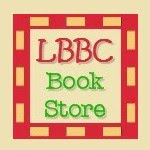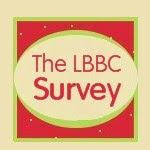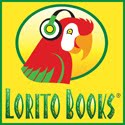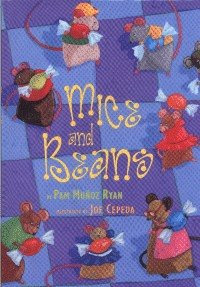 Woohoo! So the LB Book Club's first contest and giveaway is now here. To celebrate our two month anniversary a week from tomorrow (October 4th) as well as our growing readership, we have a little book prize to giveaway. One lucky winner will be announced on (surprise!) October 4th. All you have to do is leave us a comment here describing one special way in which you are teaching your children Spanish. Do you have a particular game you like to play? Is there a family tradition you are passing down to your kids? Do you go on field trips to somewhere special? I'd like to say that extra points are given for originality, but to be honest, we are simply going to put everyone's name in una canasta and pull one out randomly. But, remember that everyone else will be reading and probably looking for fresh ideas to use at home, too.
Woohoo! So the LB Book Club's first contest and giveaway is now here. To celebrate our two month anniversary a week from tomorrow (October 4th) as well as our growing readership, we have a little book prize to giveaway. One lucky winner will be announced on (surprise!) October 4th. All you have to do is leave us a comment here describing one special way in which you are teaching your children Spanish. Do you have a particular game you like to play? Is there a family tradition you are passing down to your kids? Do you go on field trips to somewhere special? I'd like to say that extra points are given for originality, but to be honest, we are simply going to put everyone's name in una canasta and pull one out randomly. But, remember that everyone else will be reading and probably looking for fresh ideas to use at home, too.And what, you ask, will the book prize be?
It is hard to choose because since starting the book club, books have been flowing into my house at a rather rapid rate. Next to my desk sits a pile of new books awaiting review. They are brand-spankin' new and quite a few have been sent to me from the publisher as a bonus to be given away on this blog. Some I am saving to use for el Libro del Mes or because they fit a certain month better than others.
The nice thing is that I have also received the galleys to some of these books, which are full-color samples that are stapled together and intended for review. Which is perfect for me, because I am able to use these with my kids to see how they rate and I don't have to worry about getting them dirty, or folded, etc.
At any rate, I believe our first giveaway will be a lovely new book just out by Raven Tree Press. If I Could/ Si Yo Pudiera is a lovely and imaginative book written by Nancy Sweetland. With full text in both English and Spanish, it follows the imagination of a little boy who wonders what it would be like to do things, if only he could. Inside he states,

























 "My kids love the
"My kids love the 

 "Oh, there are so many books and CDs that we love around here. I'll recommend one of our somewhat obscure favorites:
"Oh, there are so many books and CDs that we love around here. I'll recommend one of our somewhat obscure favorites: 
